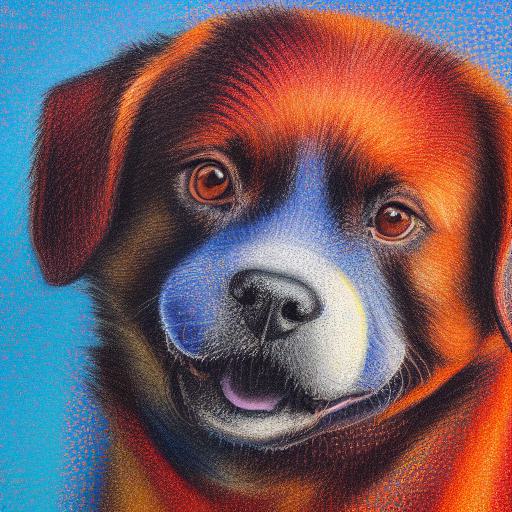Crayon illustration art
Crayon illustration is a medium of visual art that involves using crayons to create a drawing or painting on a surface, typically paper or canvas. Crayons are made from a mixture of pigments, wax, and binding agents and come in a variety of colors, making them an ideal medium for creating vibrant and colorful images.
Crayon illustration is often associated with children’s art, but it can also be used to create highly detailed and sophisticated works of art. The medium is known for its ability to create soft, textured lines and blend colors, allowing artists to create a range of visual effects, from realistic to abstract.
Various tools of crayon illustration
To create a crayon illustration, an artist will typically begin by sketching the basic outline of their subject in light lines, using a pencil or charcoal. They will then begin to fill in the details and color using a combination of crayons, blending them together to create a smooth and consistent surface. The artist may also use various tools, such as a scraper or toothbrush, to create different textures and effects.
Crayon illustration can be used to create a wide range of images, from simple sketches and cartoons to complex portraits and landscapes. The medium is particularly well-suited for creating images with bold colors and strong contrasts, making it a popular choice for advertising and commercial art.
What is AI-generated art?
AI-generated art refers to artwork that is produced through the use of artificial intelligence algorithms. This approach offers many advantages over traditional methods, such as speed, efficiency, and the ability to explore different styles and techniques. Moreover, AI-generated art can be tailored to meet specific requirements, making it a valuable tool for designers and artists alike. By embracing AI-generated art, the art industry can become more diverse and inclusive, providing a platform for artists from diverse backgrounds to share their unique perspectives and experiences.
To incorporate AI-generated art into their projects, designers and artists can leverage a variety of online tools and resources, such as Visual Paradigm Online. Additionally, they can explore the vast creative potential of AI-generated art through platforms like Stable Diffusion, Midjourney, and Dalle 2, which offer a wide range of tools and techniques for generating original works of art. By experimenting with AI-generated art, designers and artists can unlock new levels of creativity and expressiveness, leading to the creation of truly innovative and inspiring works of art.
How to create this prompt?
Firstly, it starts with a close-up of a painting of a smiling dog, indicating that the image generated will be focused on the dog’s face. This detail gives the AI a clear starting point for generating an image and enables it to understand the requirements of the prompt better.
The prompt also specifies the background color as blue, which will likely influence the colors used in the dog’s fur or any other details in the image. Additionally, the mention of pointillism as a technique provides further guidance to the AI in determining how to render the image. Pointillism is a painting technique that involves using small dots or points of color to create an overall image, which would likely result in the generated image having a distinct and specific appearance.
Moreover, the prompt specifies the medium used for the artwork as colored pencil, which can also influence the colors used in the generated image. Colored pencils can create a range of vivid colors, and the AI will take this into account when generating the image. It also mentions that the artwork was a contest winner on Shutterstock, indicating that the image generated should be of high quality and detail.
The prompt further describes the painting as a large pastel, which could influence the overall tone of the image, as pastels tend to create a softer and more muted look. Lastly, the mention of the image being a color pencil sketch inspired by Edwin Landseer provides another reference point for the AI to understand the required style of the image.
In summary, a good AI prompt needs to be specific and detailed, providing clear reference points for the AI to understand the required style, colors, techniques, and overall tone of the generated image. Each element in the prompt influences the final image generated, and thus, it is essential to be clear and precise in your instructions when creating a prompt.


